Aric Audio Super 6SN7 Linestage Preamplifier by Mike Wright

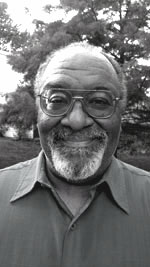 I had an exciting encounter at AXPONA this past April. I was going over some of the rooms I had been by and exchanging thoughts with one of my pals when a gentleman I had never met approached me and asked, “Are you Michael Wright, who writes for Stereo Times?” What struck me as odd was that I was not wearing an industry badge or anything you could see with my name. As a world-famous audio reviewer, I hid my true identity and was there incognito. Initially surprised by this question, I responded in the affirmative with a quizzical look, wondering how my disguise (Packers cap) failed me.
I had an exciting encounter at AXPONA this past April. I was going over some of the rooms I had been by and exchanging thoughts with one of my pals when a gentleman I had never met approached me and asked, “Are you Michael Wright, who writes for Stereo Times?” What struck me as odd was that I was not wearing an industry badge or anything you could see with my name. As a world-famous audio reviewer, I hid my true identity and was there incognito. Initially surprised by this question, I responded in the affirmative with a quizzical look, wondering how my disguise (Packers cap) failed me.
The gentleman said he recognized my voice from discussions we had over the phone. Someone who could hear that well must be a “real” superhero or a well-trained law officer (or an audiophile). Then, the gentleman introduced himself. It was none other than Aric Kimball, owner of Aric Audio, whom I’d had several discussions with, albeit over the phone, during my review of his “Super Push-Pull Mono-amplifiers.” That was three years ago, and I would have sworn it was just last week. Man, how time flies. It’s true. As you get older, time seems to go by too fast. Still, I was happy to meet Aric and his charming wife finally. He mentioned that he and his wife were walking around the show, taking in the sights and sounds, when Aric heard a voice he recognized. We spoke briefly about the show and new review opportunities and made plans to speak again shortly after AXPONA. A few weeks later, Aric and I talked, and he told me that he was working on a new preamplifier, the Super 6SN7. I told him I would be interested in reviewing it, and we planned for me to get one for a review.
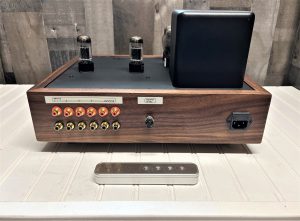
Technically Speaking
 A couple of weeks after we spoke, the Super 6SN7 arrived, packed very well, as Aric meticulously ensured his gear arrived at its destination safely and intact. After I unraveled the mysteries of the “Kimball puzzle,” unpacking the combination of various sizes and shapes of shipping foam and bubble wrap, I was impressed with what I was looking at. The Super 6SN7, in many respects, is pedestrian-looking but very well made. The body of the preamp consists of a fully hand-built, polished walnut chassis with aluminum top and bottom plates. The chassis is copper-lined and uses 100% copper wiring throughout. The front panel consists of an on/off toggle switch, a volume control, and a selector switch. An LED display for the Khozmo 64-step relay-based remote volume controller is located between the volume control and selector switch. The rear panel of the Super 6SN7 contains gold-plated Neutrik connectors. There are four single-ended input connectors, two single-ended output connectors, a five-position variable output level (up to 20 dB), and an IEC connector for power cords. The top plate holds two 6SN7s, a 5U4GB tube rectifier, two OD3 tube regulators, and the preamp’s most dominant feature, a toroidal power transformer for extremely low self-noise. Other features of the Super 6SN7 include:
A couple of weeks after we spoke, the Super 6SN7 arrived, packed very well, as Aric meticulously ensured his gear arrived at its destination safely and intact. After I unraveled the mysteries of the “Kimball puzzle,” unpacking the combination of various sizes and shapes of shipping foam and bubble wrap, I was impressed with what I was looking at. The Super 6SN7, in many respects, is pedestrian-looking but very well made. The body of the preamp consists of a fully hand-built, polished walnut chassis with aluminum top and bottom plates. The chassis is copper-lined and uses 100% copper wiring throughout. The front panel consists of an on/off toggle switch, a volume control, and a selector switch. An LED display for the Khozmo 64-step relay-based remote volume controller is located between the volume control and selector switch. The rear panel of the Super 6SN7 contains gold-plated Neutrik connectors. There are four single-ended input connectors, two single-ended output connectors, a five-position variable output level (up to 20 dB), and an IEC connector for power cords. The top plate holds two 6SN7s, a 5U4GB tube rectifier, two OD3 tube regulators, and the preamp’s most dominant feature, a toroidal power transformer for extremely low self-noise. Other features of the Super 6SN7 include:
- Miflex copper foil coupling capacitors.
- Vishay resistors.
- An all-film capacitor power supply combined to provide reliable power delivery with excellent bandwidth and beautiful tonality.
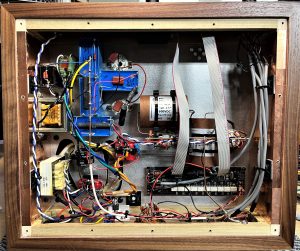
 The input stage is direct-coupled to the cathode-follower output stage for very low distortion and excellent linearity. The Super 6SN7 offers a good combination of high-end parts and first-rate construction, and let me not forget, it comes with a nice remote control.
The input stage is direct-coupled to the cathode-follower output stage for very low distortion and excellent linearity. The Super 6SN7 offers a good combination of high-end parts and first-rate construction, and let me not forget, it comes with a nice remote control.
Aric sent me two sets of 6SN7 pairs for this review to play with. A pair of NOS Tung Sol long black-plate 6SN7s, which sounded good with all types of music, is the pair I did most of my listening with. He also sent a pair of NOS short bottle Sylvania chrome top black plates. These tubes also sounded good, with a slightly more dimensional midrange with a little more presence but not as forgiving with certain types of music.
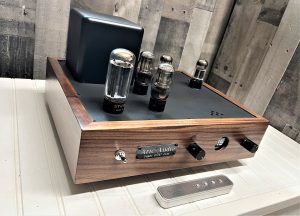
How It Sounds
Finally, I was ready to begin serious listening after getting everything unboxed, set up, and putting some hours on for break-in purposes. The first thing that struck me about the Super 6SN7 was how dynamic it was. No, I did not have the volume turned up high, and the variable output level was set to match the rest of my system, but still, the sound was dynamic, impactful, and had plenty of snap-on drum whacks and upright bass string snaps. The other thing was the bass performance. That caught me off-guard. Not only was the bass authoritative, extended, tight, and impactful, but there was a window opened to allow me to hear what the bass performers, upright, electric, and synthesized, were doing when they performed.
Along with the previously mentioned bass string snaps, the Super 6SN7 made things like bass string manipulation to get certain sounds or to hit specific notes particularly noteworthy. Several times, I noted during my listening that I didn’t recall specific notes or parts of the music I was listening to sounding the same as I had recalled hearing it. For the first 3-4 weeks of listening, I kept asking myself if Aric told me this preamp cost $5K or $6K. It’s just under $4K. Sonically, the sound was detailed and natural but without any etch or edginess. Tonally, the Super 6SN7 is obviously in the tube camp and spoke with a beautiful, rich sonic palette of colors. Though this is true, it never sounded bloated or loose, and the bass never sounded boomy or emphasized, nor was there any mid-bass hump present that I could hear.
Upper frequencies were extended and airy. Brass instruments, triangles, and cymbals had realistic decay, and musical transients were believable with speed, detail, and snap without any softening or dulling. The Super 6SN7’s midrange performance was exceptional. The sound was dimensional; performers sounded existent within their own three-dimensional space, located on a wide, deep soundstage, and on several occasions felt like they were in the room. Vocalists sounded unrestrained and with sustained harmonics. The performances appeared in my room on a well-delineated, layered, and transparent stage that extended beyond my speakers with good center fill and notably good depth. Several times while listening to music, my spidey senses tingled because I heard sound coming from the music selections that I didn’t recognize and left me feeling like something was going on in another area of the house or out in the attached garage. It was initially unnerving, but when I heard the sounds replicated during replay, I asked myself, “How much did Aric say this preamp costs?”
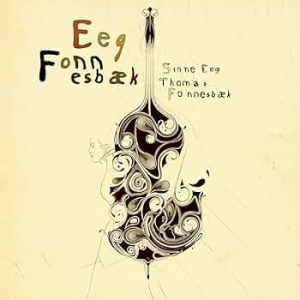 The music I used during my listening sessions was rendered wonderfully by the Super 6SN7. A female vocal reference I like to listen to is a recording of Sinne Eeg & Thomas Fonnesbaek’s collaboration, “Eeg-Fonnesbaek” [Stunt]. Ms. Eeg is a compelling vocalist I have enjoyed listening to over the last few months, and her accompanist, Mr. Fonnesbaek, is an extraordinary bass player, playing the upright bass on this disc. The Super 6SN7 did a marvelous job portraying the closeness and intimacy you get from the microphone’s perspective, making them seem eerily in the listening room. I felt that the fullness of tone to Sinne Eeg’s voice and Thomas Fonnesbaek’s detailed bass playing came across as more visceral and palpable, especially on tracks Willow Weep for Me, Taking it Slow, and Body and Soul.
The music I used during my listening sessions was rendered wonderfully by the Super 6SN7. A female vocal reference I like to listen to is a recording of Sinne Eeg & Thomas Fonnesbaek’s collaboration, “Eeg-Fonnesbaek” [Stunt]. Ms. Eeg is a compelling vocalist I have enjoyed listening to over the last few months, and her accompanist, Mr. Fonnesbaek, is an extraordinary bass player, playing the upright bass on this disc. The Super 6SN7 did a marvelous job portraying the closeness and intimacy you get from the microphone’s perspective, making them seem eerily in the listening room. I felt that the fullness of tone to Sinne Eeg’s voice and Thomas Fonnesbaek’s detailed bass playing came across as more visceral and palpable, especially on tracks Willow Weep for Me, Taking it Slow, and Body and Soul.
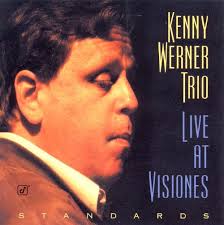 For a live recording in an intimate setting reference, I enjoy listening to “The Kenny Werner Trio’s Live at Visiones: Standards” [CD, Concord 4675]. It’s a go-to for assessing how equipment replicates live recordings and the intimacy of the interaction between the artists and the attendees. I like how recording engineer Paul Wickliffe mic’d the sound of this New York City jazz club and picked up the ambiance and lifelike energy of the room. What stands out for me are impressive performances. The Super 6SN7 did an exceptional job putting the trio into my room, sounding smooth and realistic. It was essential in helping the system display the interactions of pianist Werner, bassist Ratzo Harris, and drummer Tom Rainey.
For a live recording in an intimate setting reference, I enjoy listening to “The Kenny Werner Trio’s Live at Visiones: Standards” [CD, Concord 4675]. It’s a go-to for assessing how equipment replicates live recordings and the intimacy of the interaction between the artists and the attendees. I like how recording engineer Paul Wickliffe mic’d the sound of this New York City jazz club and picked up the ambiance and lifelike energy of the room. What stands out for me are impressive performances. The Super 6SN7 did an exceptional job putting the trio into my room, sounding smooth and realistic. It was essential in helping the system display the interactions of pianist Werner, bassist Ratzo Harris, and drummer Tom Rainey.
Another favorite live recording is Wynton Marsalis’ CD, Wynton Marsalis Live At The House of Tribes [Blue Note Records]. This is one of his brother’s, Delfeayo Marsalis’, best productions. Wynton’s trumpet work is exceptional, as it always is, and the accompanying musicians add to a musically enjoyable listening experience. The microphone setup captures just about every sound in the small club in New York’s East Village and adds to a live, late-night listening event that is both pleasurable and intimate. The Super 6SN7 allowed me to hear every nearby conversation as though I were in the midst of the club and did a remarkable job of capturing the room’s ambiance. I have enjoyed listening to Norwegian percussionist Terje Isungset’s Winter Songs (Icemusic) [All Ice Records] for electronic bass. I enjoyed listening to the whole recording but returned to the track, “Fading Sun,” most often for Lena Nymark’s vocals and the room shuddering and authoritative low-end. What the Super 6SN7’s capabilities are with bass is extraordinary. The same could be said of the Super 6SN7’s capabilities with the self-titled album, Blue Tofu [CD Baby], which is an interesting mix of Tim Story’s (of Wyndham Hill fame) atmospheric nuances and ambiance with Andrea Mathews’ ethereal, moody sounding vocalizations. I enjoy listening to the tracks “A Battle Between,” “Chemical Cupcake,” “Limestone,” and “Gabriel .”The Super 6SN7 sound was distinct, with a detailed and emphatic low end on this disc and what can best be described as an airy, spatial mid-range on this recording.
It’s different to describe, especially with electronica, but that’s how I would interpret it.
A Few More Thoughts
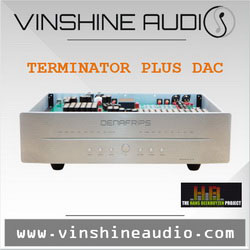 All my time with the Super 6SN7 was an absolute joy. It gave me no problems and performed as expected. It sounded as good with my Bully Sound Company solid-state Class-A mono-amps as with my VAC Signature 200 iQ amps used in a single stereo amp or with both amps set as mono-amps. The Super 6SN7 performed to the level of the more expensive amplifiers. One thing of note was that the Super 6SN7 is very revealing of system change. I could readily hear differences when I changed power cords and interconnect cables or changed to different types of shelves in my equipment stands and when I changed power conditioners. My favorite interconnect and power cord combinations were with the Dynamic Design interconnect and AnnaLyric power cords, but all of the cabling I used sounded good. I did not have another preamp on hand to compare the Super 6SN7 to, other than my highly regarded VAC Renaissance Mk V. I’m a big Convergent Audio fan and always seem to miss out on obtaining one when I’m positioned to get a preamp. But ever since I obtained my VAC preamp, other preamps are just something I never think about anymore. It certainly checks off all the boxes. During the review period with the Super 6SN7, several times, I questioned if the VAC was getting a little long in the tooth because of some sonic differences in performance. The VAC and the Super 6SN7 had superb imaging and staging, but I felt the Super 6SN7 excelled in detail retrieval, low-end punch, and authority. I felt the VAC had a slightly more “you are there” type of quality, especially on piano, but I felt that the Super 6SN7 did a better job of replicating hall sounds on some orchestral selections, like with Franz Schubert’s Unfinished Symphony. None of these differences were dramatic, and the way the Super 6SN7 compared to the VAC, at half the cost, is what led me to try to ask/remind myself of its price continually. Its tube complements are two 6SN7s, a 5U4GB tube rectifier, and two OD3 tube regulators; it sounds magical. As a treat, Aric Kimball also sent me two sets of 6SN7 tubes to try out on his preamp. When considering the Super 6SN7’s sonic performance at its price point, its sonic strengths, the enthusiasm that pals shared over several listening sessions, and having Aric Kimball standing by his offerings and helpful tube advice, I can give a “most highly recommend” designation to the Aric Audio Super 6SN7 Linestage.
All my time with the Super 6SN7 was an absolute joy. It gave me no problems and performed as expected. It sounded as good with my Bully Sound Company solid-state Class-A mono-amps as with my VAC Signature 200 iQ amps used in a single stereo amp or with both amps set as mono-amps. The Super 6SN7 performed to the level of the more expensive amplifiers. One thing of note was that the Super 6SN7 is very revealing of system change. I could readily hear differences when I changed power cords and interconnect cables or changed to different types of shelves in my equipment stands and when I changed power conditioners. My favorite interconnect and power cord combinations were with the Dynamic Design interconnect and AnnaLyric power cords, but all of the cabling I used sounded good. I did not have another preamp on hand to compare the Super 6SN7 to, other than my highly regarded VAC Renaissance Mk V. I’m a big Convergent Audio fan and always seem to miss out on obtaining one when I’m positioned to get a preamp. But ever since I obtained my VAC preamp, other preamps are just something I never think about anymore. It certainly checks off all the boxes. During the review period with the Super 6SN7, several times, I questioned if the VAC was getting a little long in the tooth because of some sonic differences in performance. The VAC and the Super 6SN7 had superb imaging and staging, but I felt the Super 6SN7 excelled in detail retrieval, low-end punch, and authority. I felt the VAC had a slightly more “you are there” type of quality, especially on piano, but I felt that the Super 6SN7 did a better job of replicating hall sounds on some orchestral selections, like with Franz Schubert’s Unfinished Symphony. None of these differences were dramatic, and the way the Super 6SN7 compared to the VAC, at half the cost, is what led me to try to ask/remind myself of its price continually. Its tube complements are two 6SN7s, a 5U4GB tube rectifier, and two OD3 tube regulators; it sounds magical. As a treat, Aric Kimball also sent me two sets of 6SN7 tubes to try out on his preamp. When considering the Super 6SN7’s sonic performance at its price point, its sonic strengths, the enthusiasm that pals shared over several listening sessions, and having Aric Kimball standing by his offerings and helpful tube advice, I can give a “most highly recommend” designation to the Aric Audio Super 6SN7 Linestage.
Q & A with Aric Kimball, Aric Audio
 Where in the Aric Audio preamplifier line does the Super 6SN7 fall?
Where in the Aric Audio preamplifier line does the Super 6SN7 fall?
The Super 6SN7 Linestage is the “entry-level” pre in my lineup, but it’s anything but. Originally, I had its predecessor, “The Special 6SN7,” as my top-of-the-line preamp, and this one replaced it. I incorporated a ton of upgrades over the Special as well- toroidal power transformer, all film power supply caps, Miflex copper foil coupling caps, Khozmo relay-based remote- etc. to really elevate the performance of this unit. Basically, it was the Motherlode II that took its place as “king of the hill” with the addition of an outboard power supply, tube damper plates, the higher-end Khozmo remote, and a few other upgrades, but that was only because I wanted to have another model that added all the extra features customers would request. Then came the Motherlode II XL, which is the balanced version.
What did you hope to achieve when you came out with the Super 6SN7, and do you feel you achieved that goal?
I do feel that the Super 6SN7 blends the best of the Motherlode II and the original Special 6SN7 and provides the most “bang for the buck” of the lineup.
You are very knowledgeable about tube types. Why did you pick the tubes you chose for this particular circuit?
The tubes I chose are:
- The venerable 6SN7- is one of the most linear signal/driver tubes ever made. The robustly stout 5U4GB- is very attainable at a reasonable cost. A pair of OD3 regulators that effectively regulate the high voltage while still avoiding the use of solid state regulator “chips.”
Do you want to share any comments or anything regarding parts types or quality?
Speaking of that, I take a very “purist” approach to building my tube gear and feel that absolutely everything is in the signal path; whether it’s in the power supply or connected to the RCA jack, it’s all audible. As such, I employ true point-to-point wiring using pure copper wiring throughout my products- to me, this not only sounds better but is also more reliable than printed circuit boards. I also avoid the use of cost-cutting electrolytic capacitors in the power supply and instead use “medical grade” Vishay film capacitors, which are not only more reliable but also simply sound more neutral and impart less of their character to the signal. The low resistance of the Toroidal power transformer I use provides a sonic benefit, as do the high inductance chokes I use to filter out ripples in the power supply. Many designers take a shotgun approach and simply slap a solid-state regulator after a larger electrolytic capacitor and call it a day. While this is quite effective at reducing noise and hum, it is also quite audible in the signal path. So, I chose to take the analog route. It may be bulkier, but it’s more natural and has a better flow to the sound. In addition, I only use Vishay precision metal-film resistors, which are touted to be the most transparent and accurate out there. Miflex KPCU copper-foil, paper-in-oil coupling capacitors are the final output stage in the preamp and are the only two capacitors directly in the audio path (not including the power supply capacitors). The Khozmo remote volume controller accurately tracks between left and right channels and uses a fixed shunt resistor of high quality and then precision series resistors that are each engaged by a micro-relay to adjust the volume in 63 steps. This unit is made in Poland and is the best remote volume system I’ve ever used- it is truly top-tier. Each of these parts provides great synergy and a transparent and natural presentation that allows the natural tube harmonics to shine through.
Have you considered a preamp with a phono section or a standalone phono preamp? Or a DAC?
I also offer the standalone “Super MM Phono” stage as a current product but have plans to incorporate a set of high-quality SUTs (step-up transformers) to allow MC cartridges to be used. It will also have selectable gain and loading options for different MC carts and will be a new model released in the next couple of months. I currently don’t have any plans for a DAC, as I’m strictly a tube guy and have no experience with digital converters, clocks, or the like. I’ll leave that to the digital gurus (for now).


Specifications:
Aric Audio Super 6SN7 Linestage Preamplifier – $3,995
Manufacturer: Aric Audio
Website: https://www.aricaudio.com
Phone: 413-627-2543
Mike Wrights’ Associated Equipment:
Loudspeakers
Tekton Design Moabs
Amplifier
VAC Signature 200 iQ Amplifiers (used as stereo and monoamps)
BSC Audio BSC100m 100-Watt Mono-amps
Preamplifier
VAC Renaissance Mk V with Phono
Analog
Merrill Heirloom Turntable
Rowland Research Consonance Tonearm
Transfiguration Phoenix Cartridge
Digital
Asus Laptop w/Fidelizer Pro, Roon, and JRiver v.26 for Hi-Res Files
Holo May Kitsune III DAC
Bricasti M5
Marantz SA-7S1 CD Player
Cables
Dynamic Design Heritage Balanced Interconnect
Dynamic Design PAAPI
Silversmith Fidelium Speaker Cable
Pink Faun – USB
Pink Faun – RCA
AnnaLyric Power Cords
Essential Sound Product Essence II Power Cords
Power Line Conditioner
Inakustik 3500P (Distributor loan)
Essential Sound Products Essence Power Distributor
Accessories
Star Sound Apprentice & Rhythm Platforms – for amps
Star Sound Sistrum Rhythm Two Platform Stand
Symposium Acoustics Ultra Platform
Symposium Acoustics HDSE Rollerblocks
Symposium Acoustics +2 Rollerblocks
Adona GX4 Equipment Stand
Epiphany Stand Systems – Celeste Reference Stand
Stereo Times Masthead
Publisher/Founder
Clement Perry
Editor
Dave Thomas
Senior Editors
Frank Alles, Mike Girardi, Russell Lichter, Terry London, Moreno Mitchell, Paul Szabady, Bill Wells, Mike Wright, and Stephen Yan,
Current Contributors
David Abramson, Tim Barrall, Dave Allison, Ron Cook, Lewis Dardick, John Hoffman, Dan Secula, Don Shaulis, Greg Simmons, Eric Teh, Greg Voth, Richard Willie, Ed Van Winkle, Rob Dockery, Richard Doron, and Daveed Turek
Site Management Clement Perry
Ad Designer: Martin Perry


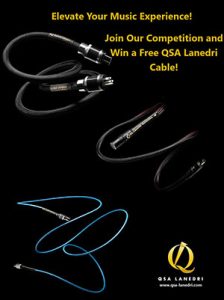
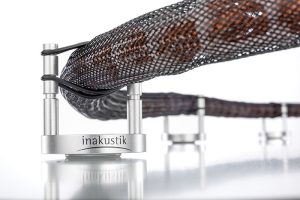


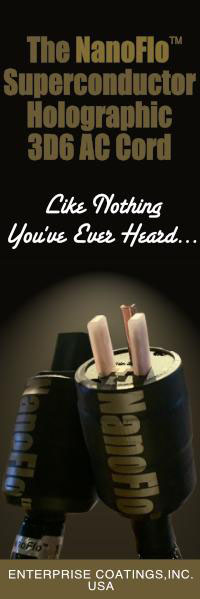
Be the first to comment on: Aric Audio Super 6SN7 Linestage Preamplifier by Mike Wright